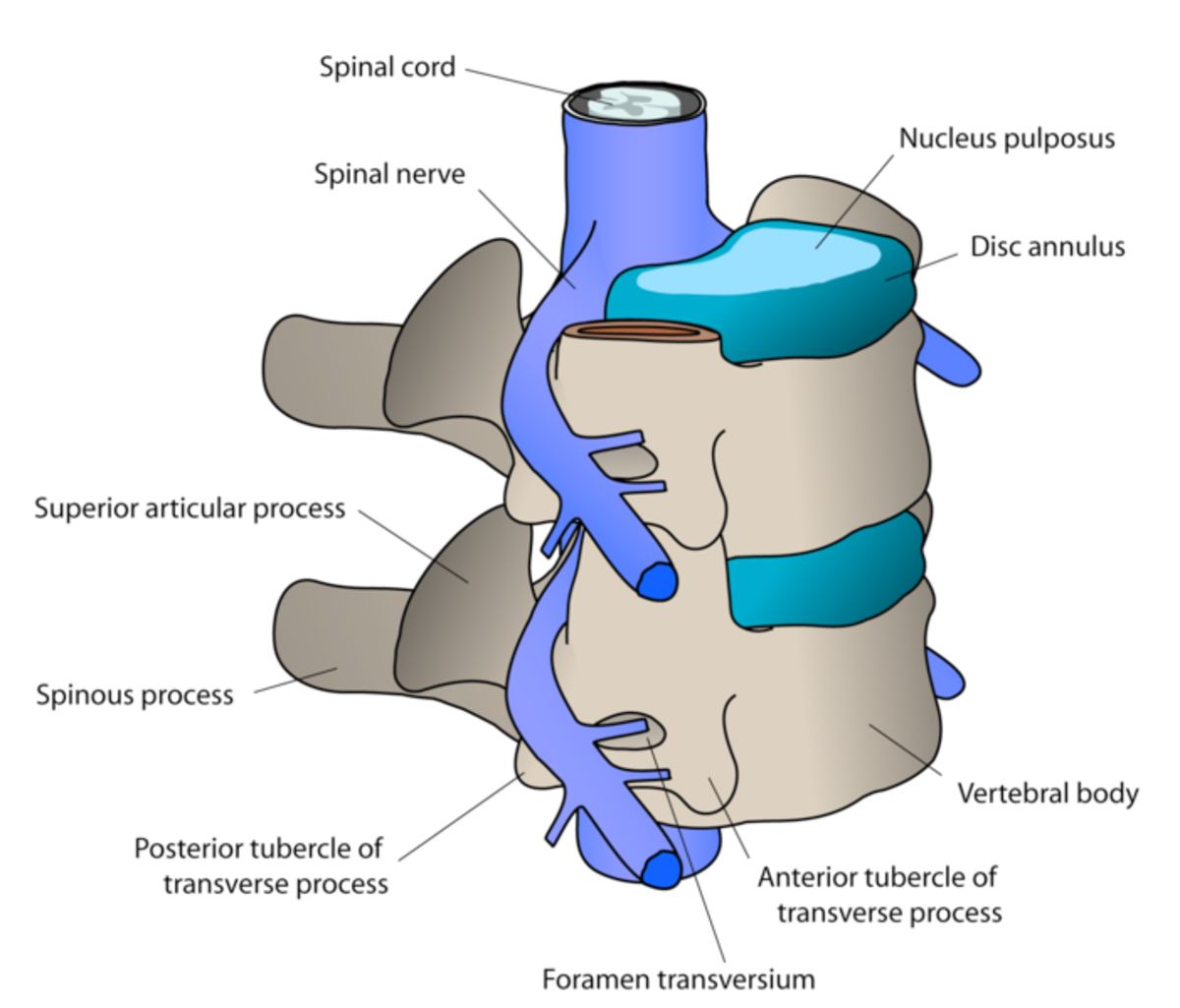Artificial Disc Replacement --Revolutionary Technology for Degenerative Disc Disease
Artificial disc replacement is a revolutionary technology that helps to
maintain the spine's natural range of motion. Although gaining buzz in
the United States, replacement
of damaged discs with artificial discs is not new, as this procedure
has been performed in Europe for almost 10 years. Continue reading to
understand the basics of damaged discs, methods of treatment, and why
artificial disc surgery may or may not be the best option for you.
Understanding Degenerative Disc Disease
Of course, artificial disc replacement is one option for
correcting degenerative disc disease. But what is degenerative disc
disease, and how does it occur? To answer that, we must examine the
spine.
The spine is made up of bones known as vertebrae. In
between each vertebrae are spinal (intervertebral) discs, which are
small cushions that acts as shock absorbers and helps the spine
maintain its flexibility and range of motion. Each disc is made up of
two components:
- Annalus fibrosis: a firm, fibrous outer layer that contains nerves and
- Nucleus pulposus: a soft jelly-like core that contains proteins. If these proteins leak out to the nerves of the outer layer, it can cause excrutiating pain.
Factors
such as age, wear and tear, and back injury can cause these discs to
degenerate gradually over a period of time. Since the spinal discs do
not have access to sufficient blood supply, they are unable to repair
themselves if an injury occurs. Degeneration of the discs tend to
occur over 20-30 years in three stages. Causes of degeneration also
include:
- Disc dehydration. The discs begin as 80% water. As we get older, the discs dries out and can't withstand shock as well.
- Injury. Injuries can not only cause pain, but also swelling and instability.
- Wear
and tear due to daily activities. By age 60, most people have some
degree of disc degeneration, though not everyone experiences back pain.
Symptoms of disc degeneration include:
- Intense pain when bending, lifting, and twisting
- Back pain that intensifies when sitting, especially during prolonged periods
- Radiated pain, numbness, and tingling to other parts of the body, particularly the extremities
- Weakness in leg muscles or foot
- Severe pain that comes and goes.
Artificial Disc Replacement Surgery Vs. Traditional Treatments
Traditionally, degenerative disc disease is treated by
non-surgical and surgical methods. Non-surgical treatment is usually
the first line of defense and includes:
- Self-care by keeping the spine in alignment and adjusting standing, sitting and sleeping habits.
- Physical therapy. Physical therapists help to increase the strength of the spine and flexibility by instructing proper lifting and walking techniques. They also give stretching techniques.
- Cold and hot therapy. A cold compress or ice may be applied to acute cases of degenerative disc disease for pain relief and reduced inflammation. After a few days, a warm compress can be used for pain relief and comfort.
- Pain medications. Including over-the-counter and prescription medicines, as well as corticosteroid shots directly into the spine
- Chiropractic treatment. Manipulation of the spine to relieve pressure to an area that is immobile or not moving properly.
If
non-surgical methods are insufficient for pain relief, a doctor may
recommend surgery. The most common surgical procedure is simply
removing the disc from the spine altogether. The spine is then fused
together, which severely limits the spine's flexibility and range of
motion.
This is what makes cervical and artificial lumbar disc
replacement so exciting. Artificial disc replacement allow to to
maintain motion once a damaged disc is removed. This is better than
fusion surgery since a replaced disc can help support the spine's
overall structure and protect the lower discs by sharing some of the
stress. This technology also allows for a quicker recovery time, more
spine mobility, and no need to use a bone graft.
Ideal Candidates for Artificial Disc Surgery
Ideal candidates for artificial disc replacement:
- have disc degeneration confirmed by medical history, x-rays, and other diagnostic imaging tools.
- have one diseased disc between the fourth and fifth lumbar vertebrae or the disc between the fifth lumbar vertebra and the sacrum.
- patients that have failed at least six months of treatment including pain medication, physical therapy, or back brace.
Artificial lumbar and artificial cervical disc replacement is not suitable for you if:
- you have an infection throughout the body, or just the spine
- you have more than one degenerative disc
- poor bone quality or bone disease such as osteoporosis
- you are pregnant.
The Artificial Disc Replacement Procedure
The artificial disc that will be used during surgery is a medical grade
plastic device that have been approved by the FDA. For a lumbar disc,
an incision is made in the abdomen, and the degenerated disc is removed
and replaced through this opening. For a cervical disc, the incision
is made at the front of the neck and the disc is removed and replaced.
Like any
other surgical procedure, there are potentially serious risks
involved. For example, there have been cases where an artificial disc
slipped out of place. If this happens, the patient has to undergo
emergency surgery to remove the
disc, and this surgery can be life-threatening due to the potential for
blood loss and other complications. Other potential serious surgery
complications include:
- Leakage of spinal fluid
- Infection
- Excessive bleeding
- Paralysis
- Spinal cord or nerve damage
- Allergic reaction to artificial disc materials
- Death
The
artificial disc replacement recovery time tends to be faster than
traditional methods. Light, regular exercise as directed by your
doctor can also speed up recovery
Artificial Disc Replacement Cost
The cost for an artificial disc replacement surgery
roughly ranges from $35,000 to $45,000. Many insurance companies do
not cover this procedure since it is still considered as experimental
or unproven. You would have to check with your insurance provider to
determine whether they would provide full, partial, or no coverage.
Medicare and Medicaid only offers partial reimbursement.
Stenosis of the Spine--The Basics of Spinal Stenosis
Cervical Spine Surgery--What to Expect During and After a Cervical Spine Procedure
Spinal Stenosis Treatment--The Different Methods of Treating Spinal Stenosis
Herniated Disc Treatment -- Causes, Symptoms, and Treatments for a Herniated Disc
Bulging Disc Treatment -- Bulging Disc Causes, Symptoms, and Treatment Options
Sciatic Nerve Treatment--Treating Sciatica and Piriformis Syndrome








